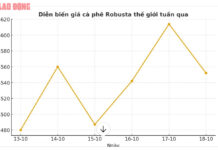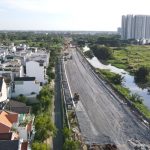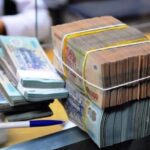A Transportation Infrastructure Revolution
Located just over 50 km from Hanoi, Ha Nam province holds a significant geographical advantage as a gateway for trade between the capital and the southern provinces. The confluence of National Highway 1A and the Cau Gie-Ninh Binh Expressway, along with the ring roads 3, 3.5, and 4, form a perfect connectivity network south of Hanoi.
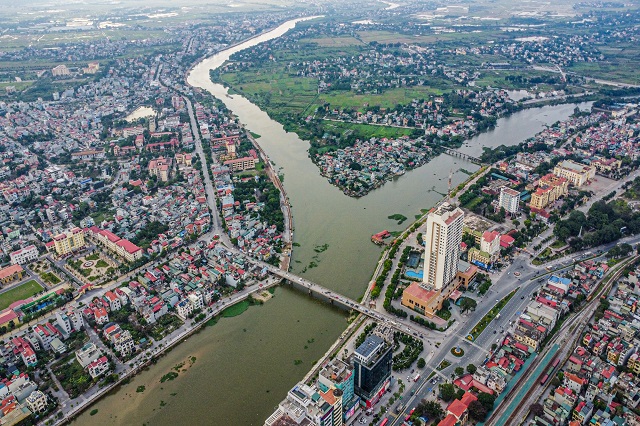 Ha Nam’s urban transportation infrastructure is undergoing a remarkable transformation.
|
In addition to its well-connected road network, Ha Nam also boasts a unique advantage with the existing North-South railway and the future North-South high-speed railway passing through the province. The region is also in close proximity to the planned second airport of the Capital Region, which is expected to be constructed in Phu Xuyen and Ung Hoa districts, Hanoi, with an annual capacity of approximately 50 million passengers.
It is no exaggeration to say that Ha Nam’s coordinates will unlock a multi-point connectivity journey in the future, offering a perfect transportation network that caters to all mobility needs. This has contributed to the province’s remarkable economic growth in recent years and promises an even more prosperous future.
Since its re-establishment in 1997, Ha Nam has transformed from a small, agriculture-dependent province with poor infrastructure and outdated urban planning into a dynamic and rapidly developing economy. In the first half of 2024, the province’s gross regional domestic product (GRDP) reached nearly VND 27,000 billion, leading the Red River Delta region and ranking fourth in the country in terms of growth rate. Ha Nam also serves as a “buffer city” for the capital, with well-planned education and healthcare networks.
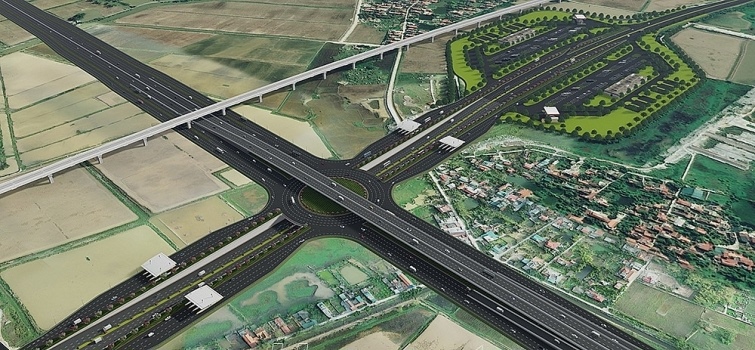
Rendering of the Phu Thu interchange, featuring a modern 3-layer design, expected to be completed by 2025.
|
To realize its vision, Ha Nam has been working diligently to revolutionize its transportation infrastructure, serving as a launchpad for socioeconomic breakthroughs. One notable project is the Phu Thu interchange, a modern 3-layer transportation hub expected to be operational by 2025. This interchange will enhance regional connectivity and boost economic development. In parallel, the Capital Region’s Ring Road 5, with a length of 331 km and traversing 8 provinces and cities (including a section of over 35 km in Ha Nam with 6 lanes), is anticipated to be constructed by 2027. This road will create a powerful impetus for socioeconomic development and propel the heritage-rich land of “Doi mountain and Chau river” to new heights.
A Magnet for Real Estate Investors
The growth of major cities has taught us that transportation infrastructure development is a foundational aspect that precedes and stimulates the advancement of urban infrastructure and attracts residents from the central city to satellite towns. Places with well-integrated and modern transportation networks serve as catalysts for sustainable and valuable real estate growth, as seen in Hanoi, Haiphong, Quang Ninh, Danang, Ho Chi Minh City, and Binh Duong.
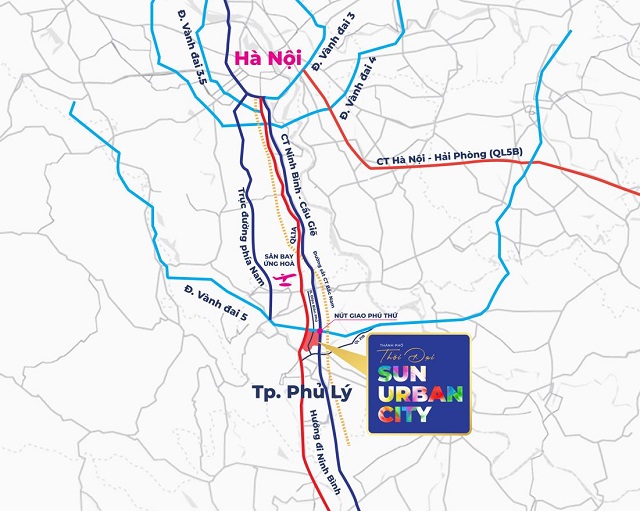
Sun Urban City Ha Nam, a modern urban area, benefits from its convenient transportation network.
|
In Ha Nam, the advantages of location, planning, and tourism potential converge in the new administrative center of Phu Ly city, north of the Chau Giang river. This area presents ample opportunities for large-scale, high-caliber projects that anticipate the real estate market’s evolution, offering novel experiences to locals and tourists alike. Situated between the vital National Highway 1A and the North-South Expressway, this region enjoys easy access to the Liêm Tuyền and Phú Thứ interchanges and will greatly benefit from the upcoming Ring Road 5 and North-South high-speed railway. With the goal of relocating the administrative center from the old town of Phu Ly, Ha Nam is investing in major roads like Le Cong Thanh and Dien Bien Phu (up to 68 meters wide)…, paving the way for a “new center” of Ha Nam in the near future.
This area is also ideal for developing modern urban areas with comprehensive amenities, attracting experts and successful individuals working in Ha Nam, Hanoi, and nearby areas to reside and settle down. According to PGS. TS Tran Dinh Thien, former Director of the Vietnam Economics Institute, in the last decade, Ha Nam has established itself on the country’s growth map, achieving a growth rate of over 10%/year. Ha Nam also ranks fourth in the Red River Delta region in terms of urbanization rate, following Quang Ninh, Haiphong, and Hanoi.
“While Ha Nam has a high urbanization rate, the quality of urbanization is not yet commensurate,” said Mr. Thien. “Therefore, it is necessary to enhance the quality and elevate the province’s urban standards to a new level. This presents a significant opportunity for experienced investors who focus on developing high-end urban areas.”
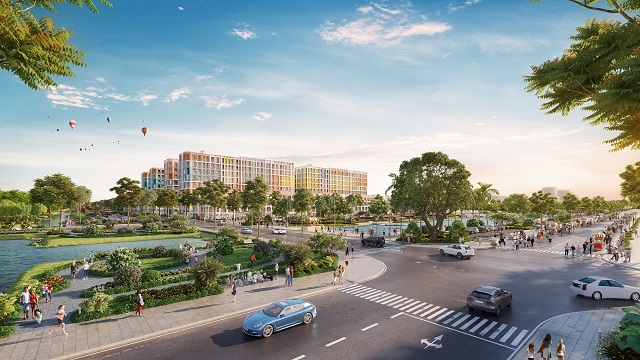 Sun Urban City, a mega-urban project, is set to introduce a new standard of living in Phu Ly, Ha Nam.
|
One notable mega-urban project in the North Chau Giang area of Phu Ly that has caught the attention of investors is Sun Urban City Ha Nam. Developed by Sun Property (a member of Sun Group), this 420-hectare project, with a total investment of VND 35,000 billion, maximizes the area’s transportation advantages and enhances its class with a comprehensive range of amenities. The project aims to transform the region into an ideal suburban resort with 1,001 conveniences, promising to become the “new city” of Ha Nam and the entire Red River Delta region. It will serve as a transportation hub and a magnet for substantial investment inflows. This project also aligns with the Prime Minister-approved plan to develop Ha Nam’s eco-tourism, cultural tourism associated with spirituality, entertainment, and sports, making the province a desirable destination for domestic and international tourists.
“Ha Nam’s location on the North-South economic corridor provides a significant advantage for growth and advancement,” said Mr. Nguyen Van Dinh, Vice Chairman of the Vietnam Real Estate Association. “While Ha Nam may have lagged behind provinces like Bac Ninh and Hung Yen in the past, this could be a blessing in disguise, as there is still ample room for growth and opportunity for large corporations to invest strategically.”
Territory-based credit policy in Ho Chi Minh City shows nearly 39% growth
Credit programs, not only support and assist the poor and vulnerable, who are the main subjects of policies in Ho Chi Minh City, with capital for production and business to create livelihoods and employment opportunities, but also play a significant role in the direction of sustainable economic development, economic growth, and social security ensured by the Government.




